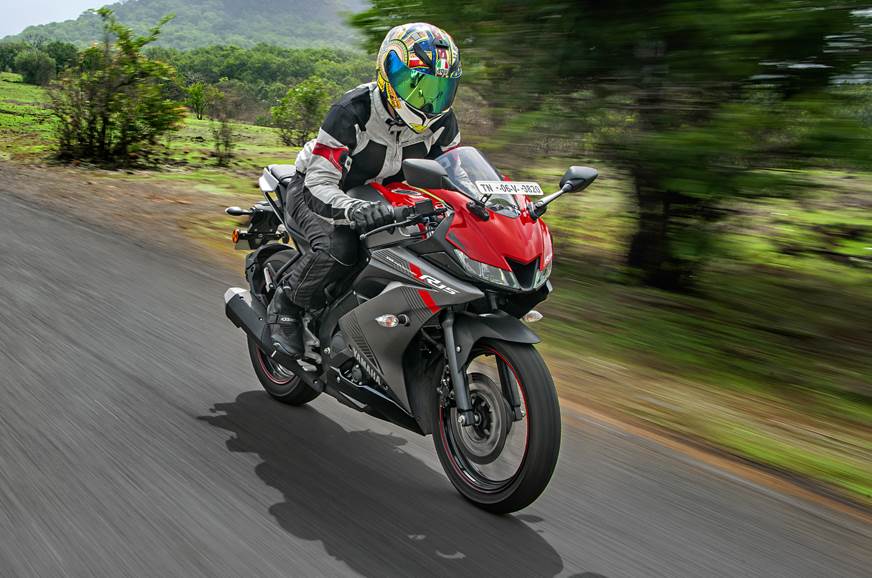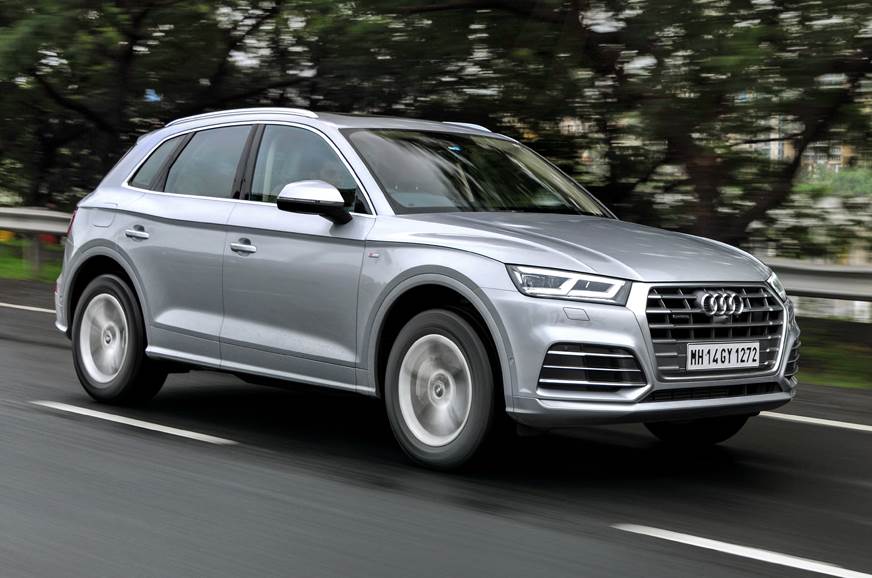
Our brief first experience with the latest R15 V3.0 at the Chennai racetrack revealed that it was more potent than any previous R15. And now, after an agonising three-month wait, Yamaha has finally managed to give us the bike to ride on the streets. Wasting no time, we head out to the three types of roads most future buyers will end up riding the bike through – congested streets, open highways and, of course, twisty hill sections. Here’s how this hot, new Yamaha fares.
Styling and design
You’ve already heard all about this, so we won’t spend much time here, except to say that the R1/R6-inspired R15 is an absolute eye-candy and that we can’t stop staring at it. The design is sharp and proportionate, and we are relieved to discover that the dual LED headlights are powerful enough to light up the road well at night. The FZ25 strongly requires a similar update.
Further observation shows that the fairing is cleverly designed to keep muck out of the belly pan. Still, practicality is not great – the V3.0’s rear seat is still too high to sit comfortably for long. But that’s okay, as the lovely see-through tail section looks even better with an unoccupied rear seat. At the front, the V3.0 has a good-looking cockpit, and R1 inspiration can be seen in the tank’s gills, the handlebar’s hollow slots and the substantial bubble visor.
But there are also some things we didn’t like. The plastics seem quite thin and then there are the ugly, uneven welds in exposed spaces like the front subframe. The seat stitching on our test bike was already giving up, and while this could be a result of wear, the bike had covered only 1,200km. The locking mechanism for the removable rider seat feels quite flimsy too. Though overall quality levels are still quite good, they’re a drop from the benchmark that Yamaha themselves set with products like the original R15 and FZ16.
Engine and performance
The R15 V3.0 runs a 155cc, liquid-cooled, SOHC, four-valve motor with a new intake and exhaust system, and the cool Variable Valve Actuation (VVA). To put it in relatable terms, VVA helps improve the engine’s low-end tractability, while keeping the top-end surge that was much loved in the old R15s.
The V3.0 also features a slip-and-assist clutch that works well and makes downshifting quickly through the precise six-speed gearbox effortless. This combination of a meaty motor, smooth-shifting gearbox and light, 139kg kerb weight, results in a really quick 150cc motorcycle. With 19.3hp, performance is bound to be strong and the R15 is now the quickest accelerating 150cc bike we’ve ever tested, doing 0-100kph in 10.7sec. The bike will show upwards of 140kph on the display, and is quite happy to sit at 110kph for extended periods without sounding or feeling harsh.
The engine feels just as free-revving as you’d hope and expect from an R15, but we’ve noticed that the added performance comes with a very slight decrease in refinement – minor buzz creeps into the bars, pegs and seat once you start flirting with the redline. Happily, VVA seems to have aided efficiency too and the R15 returned a very decent 37.2kpl (city) and 49.7kpl (highway) in our test cycle.
Ergonomics, handling and ride
The riding position is now more committed than ever, with lower-set clip-ons and a higher seat (815mm). Aches and pains are a certainty if (like me) you’re not fit, but there are also many plus points like the sense of control, and, of course, the cool factor of looking all racy on your motorcycle.
But it goes beyond just looks, with a more aggressive steering rake angle further sharpening the experience. Despite the fattest tyres ever fitted to an R15, its dynamics feel alert and immediate. The bike darts into corners effortlessly, and it does so in an encouraging manner without giving you a scare. As a beginner’s sports bike, it doesn’t get much better than this. The bike we were riding had a MRF Zapper FX1 tyre up front and the optional (Rs 9,998, but it can be found cheaper online) Metzeler Sportec M5 rear tyre. The stock MRF option is no longer radial, as was seen on the V2.0.
While the 282mm disc up front and 220mm disc at the rear offer decent braking performance, we sorely miss having ABS, and this is our biggest issue with this motorcycle.
With all that performance-oriented handling, we’re happy to report that the suspension comfort is still very reasonable. Small bumps and imperfections are soaked up quite well, but the rear shock (non-adjustable, as with the R15 V2.0) feels a little firm when compared to the V2.0. This makes sense, given that the travel for the rear has reduced from 105mm to 97mm.
Conclusion
The R15 V3.0 has a lot going for it – it looks stunning, is quick for its class, handles well and still returns impressive fuel-efficiency figures. Other than a few quality issues and the lack of ABS, it is hard to find fault with this bike. Its Rs 1.25 lakh (ex-showroom, Delhi) price tag is reasonable for what’s on offer, and the only competition comes from the similarly priced Bajaj Pulsar RS200. If you are willing to live with the aggressive riding position, this is one of the best sub-Rs 1.5 lakh bikes on sale today.
[“Source-autocarindia”]




